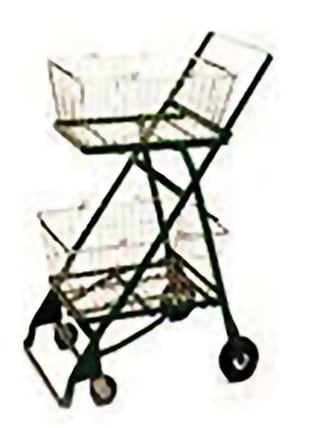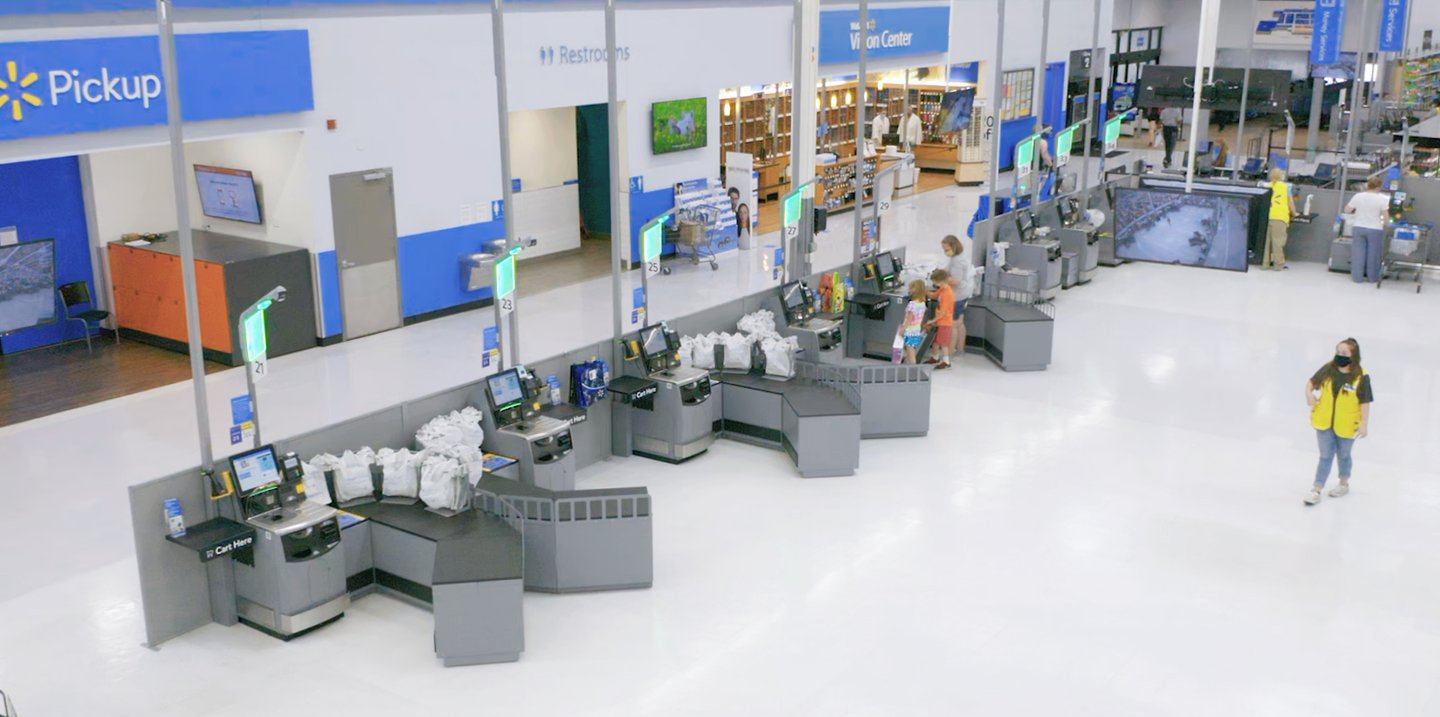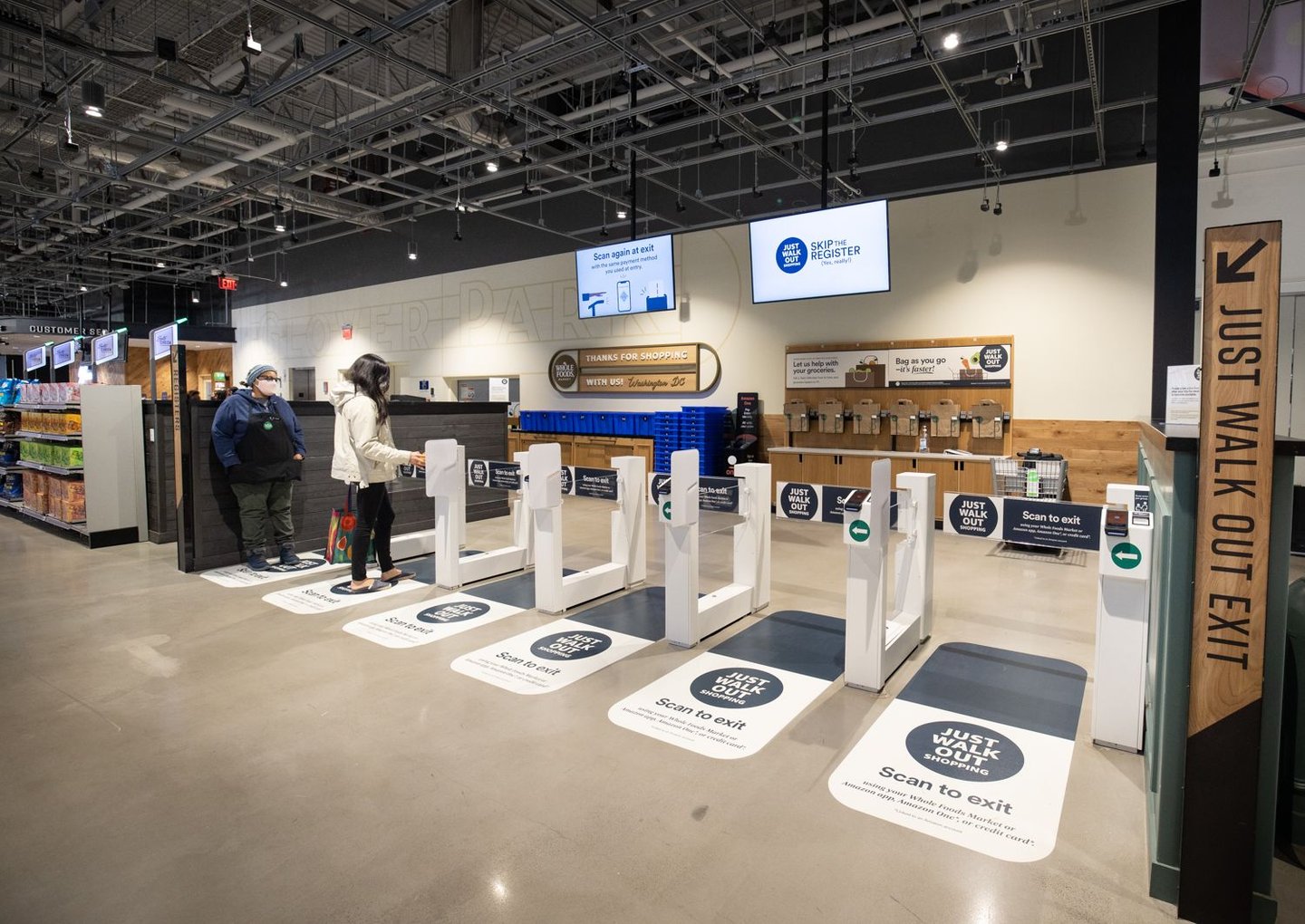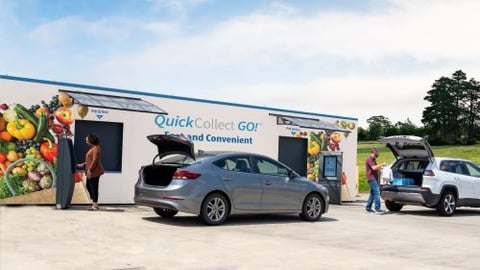Grocery Tech: A Look at the Past Century’s Innovations
Tech Highlights
1920s: Clarence Birdseye designed and patented his Quick Freeze Machine and developed a full line of frozen foods designed for commercial sale.
1930s: Refrigerators became widespread in U.S. households, allowing consumers to store perishable products for longer amounts of time.
1940s: Automatic sliding doors began showing up in grocery stores, beginning with George Jenkins’ “dream store” (Publix) in Florida.
1950s: The round turntable checkout counter debuted at supermarkets, helping to speed up a part of the shopping trip that had become an irritation for customers.
1960s: Cash registers began to go electronic.
It’s hard to imagine the success of the supermarket without considering the impact of technology. Long before computers came along, the retail business made use of the latest scientific inventions to create new efficiencies and make consumers’ lives easier. From the invention of the first cash register, to the development of long-haul trucks and highways that made cross-country trade available, and on to today’s hand-held devices and the latest cameras equipped with artificial intelligence (AI) vision that can teach us more than ever before about consumer behavior, technology has truly triumphed over the past century.
And if you think technology has evolved at a rapid clip over the past several decades, hold on to your seat for what’s coming next, according to the experts. “I talk all the time about this exponential growth curve of technology,” observes Gary Hawkins, CEO of Center for Advancing Retail & Technology (CART), based in Walnut, Calif. “It’s really the exponential growth curve of computer processing power and Big Data and so on. It’s accelerating so rapidly because we’re now moving past that inflection point on the growth curve. What that means is that all this change — more and more technology, more and more innovation — is going to be more noticeable, and it’s going to be happening faster and faster. Science fiction is becoming real.”
Indeed, with the accelerated pace of today’s retailing environment — where the line between brick-and-mortar stores and the digital world is blurring more than ever — it’s both exciting and perhaps a bit intimidating to think of how the next 100 years in grocery retailing might pan out. For experts' thoughts on the future of grocery retailing, click here.
For the time being, though, as we celebrate Progressive Grocer’s 100th year as a publication, let’s take a look back at some of the major achievements in grocery-related technology over the past century.
The Shopping Cart
One of the earlier technological advancements of the 20th century in the supermarket industry took place in 1937, when grocery store owner Sylvan Goldman worked with mechanic Fred Young to design the first shopping cart, in an effort to make transporting groceries easier. Their prototype was a metal frame that held two wire baskets, and it was an ideal tool for self-service shopping, which was gaining in popularity at the time.
“When you look at something like the shopping cart, and the advent of moving from full service to self-serve, and then from basket to cart, you can only buy what you can carry,” observes David Bishop, partner and research lead at Brick Meets Click, based in Barrington, Ill. “So the cart was really incredible for encouraging and motivating people to buy more.”
Ron Bonacci, VP of marketing, advertising and public relations at regional chain Weis Markets, based in Sunbury, Pa., adds: “It really drove up the overall value for families, but also for the grocery industry. Retailers were able to really add to their overall sales volume in relation to that.”
Checkout Technology and Barcode Scanning
Early issues of Progressive Grocer featured advertisements touting the latest versions of cash registers. In one such ad, the National Cash Register Co. (today known as NCR) rolled out a multiple-drawer cash register that helped one retailer grow sales by 20%. “The separate total and drawer for each clerk not only make him responsible for the cash and charge sales he handles, but have increased our cash sales about 20%, as they inspire each clerk to try and beat the other fellow in cash sales,” asserted I. W. Rosenblatt, owner of a grocery and meat market in Omaha, Neb. “And, as a receipt from the register is given out on every sale, I am sure of getting all my money.”
While the earliest cash registers simply allowed the user to enter a total, the next generation included buttons for different departments, providing more category-specific data. In the 1960s, cash registers began to go electronic.
Yet it was the development of the UPC (Universal Product Code) scanner in 1974 that was truly a game changer. History was made when a pack of Wrigley’s gum was scanned at a Marsh supermarket in Troy, Ohio.
TECH HIGHLIGHTS
1970s: The world’s first UPC scanner was installed at a Marsh supermarket in Troy, Ohio.
1980s: The first barcode printer was introduced by Data Specialties, a company that changed its name to Zebra Technologies.
Companies were now using hand-held micro computers in the aisles, minis in the office, and electronic ordering and invoicing in the warehouse. These tools provided sophisticated analysis of item movement, assistance on promotional decisions, and help with shelf space allocation.
Bentonville, Ark.-based Wal-Mart completed a satellite network allowing its corporate office to track inventory and sales, and instantly communicate with stores, while Deep’s IGA, in Danbury, Conn., was testing a computerized deli ordering system, and NCR introduced the world’s first weight-conscious scanner.
By the end of the decade, a growing number of retailers were using computers for merchandising and buying decisions, to achieve new efficiencies with planograms, and to get a handle on in-store security and theft.
Bonacci recalls the huge impact scanning made on the industry. “By the time I became a bagger at Kroger in the late 1970s, it was going full swing,” he says. “You went from where hundreds of people were coding products with pricing to putting a barcode on each item where it could be scanned. That really catapulted the industry into having major opportunities for a wider variety of selection and sourcing from all over.”
Bishop notes that his father, Bill Bishop, a well-known industry consultant, went to Switzerland in the early 1970s to observe barcode scanning being piloted at a supermarket called Migros. At the time, the elder Bishop was VP of research at the Super Market Institute, which was the predecessor to the Food Marketing Institute (today known as FMI — the Food Industry Association).
“Prior to scanning, a grocer could tally up and have a general idea of how well they were doing, relative to how much money they had in the till — but they really didn’t have much visibility into what was selling,” explains Bishop.
Having data available at the item level “helped transform logistics and the whole supply chain,” says Hawkins.
Indeed, once computers came on the scene, retailers could measure the data being scanned, which helped them keep track of sales and profit margins, as well as other factors like customer count.
Ryan Redner, president and CEO of Redner’s Markets, based in Reading, Pa., considers scanning technology and its integration into both consumer-facing and front- and back-end systems to be “the most significant advancement” in technology since he’s been involved in the business.
He also points to the technology’s importance in today’s brick-and-click operations. “Being able to tie in all these touchpoints to realize online ordering while maintaining real-time inventory levels, which then affect replenishment, is amazing,” he says. “The efficiencies this creates help us to be able to provide a real-time, instant-gratification shopping experience for our guests.”
Loyalty Programs and the Evolution of Consumer Data
Following the advent of UPC scanning, the power of item-level data eventually progressed to an increased interest in shopper-specific data, and that gave birth to the loyalty programs developed in the early 1990s.
“Now we had visibility not only into what we sold, but who we sold it to and when we sold it,” observes Bishop.
Hawkins, who helped launch one of the first loyalty programs in the industry back in 1993 at his Syracuse, N.Y.-based independent store, Green Hill Farms, adds, “It wasn’t until loyalty and frequent-shopper programs that retailers began to have any understanding of their business via that shopper focus.”
Bonacci, another early adopter of loyalty cards who helped launch the Kroger Plus card, notes how data gleaned from loyalty cards helped retailers better anticipate out-of-stocks and understand shopper behavior on a deeper level. Then, once computer-assisted ordering (CAO) arrived, retailers were better equipped to have products on the shelves when they needed them, he adds.
TECH HIGHLIGHTS
1990s: Food retailers began experimenting with self-checkout systems.
Peapod started offering online grocery shopping and home-delivery service in the Chicago area.
The Kroger Co., based in Cincinnati, became the first supermarket to take grocery orders for home delivery via the internet.
Kroger began deploying a labor-scheduling tool called SuperSked, which helped the retailer staff its stores with the proper personnel to stock shelves and attend to shoppers.
2000s: Electronic buying alliances gained in popularity, including Buyproduce.com, Agribuys and Transora on the supplier side, and WorldWide Retail Exchange on the global retailing level.
EPA extended its Energy Star label to the most energy-efficient grocery stores.
Retailers tried their hands at digital marketing programs. S&H Greenpoints became a popular digital component of the tried-and-true S&H Green Stamps program, while frequent-shopper programs with rewards grew in popularity.
Kroger began working with British marketing consulting firm dunnhumby to develop better data-mining practices.
Bonacci, who went on to become VP of marketing at Delray Beach, Fla.-based S&H Greenpoints, also highlights the huge impact that personalized coupons had once they were introduced as an incentive tied to loyalty programs. “That was the critical turning point, when the adoption rate of consumers using loyalty cards really picked up,” he recounts. “We knew that rewarding consumers for what they buy would make a difference in the industry. Then the whole industry adopted personalized coupons, and we eventually went to the online and digital versions that we have today.”
Self-Checkout
Another big tech development during the 1990s was the advent of self-checkout systems, which essentially let shoppers do the scanning themselves. Dr. Howard Schneider is credited with developing the first self-checkout, which he called “the service robot.” It was installed in 1992 at a Price Chopper Supermarket in New York. NCR soon followed with prototypes of self-checkout machines.
“I’ll never forget the day I was in Kroger and we were asking, ‘Why self-checkout?’” recalls Bonacci. “And we were told it was all about giving shoppers the convenience. Back then, we were looking at how to make shopping more convenient for customers, especially those who were just purchasing one to 10 items. They wanted to get in and out of the store, and many of them saw grocery shopping as a chore.”
Media Usage and the Internet
Bonacci notes that some of today’s younger consumers don’t mind shopping as much, and instead see it as more of a sensory, explorational experience. In his estimation, the evolution of media — specifically cooking shows and channels — has been a big influence on how people experience the supermarket.
“People in the younger generations look at grocery shopping more as an opportunity to experience things, to see what’s coming out,” he notes. “We used to have only three TV stations, but that progressed into having multiple channels. And then came shows like ‘Iron Chef’ and dedicated channels like Food Network, and that made cooking at home and trying new ingredients cool. People started aspiring to be chefs in their own homes, and that gave way to the grocery industry becoming more exciting.”
Of course, television eventually gave way to the internet in becoming consumers’ major source of entertainment, information and advertising. Bonacci recalls that grocers initially began to develop company websites to provide information back in the 1990s and early 2000s.
Then came online shopping. “At first, it was just a certain selection of items available to consumers,” he says. “Then, once technology got even better, it evolved to include all the items in the store. So you went from about 12,000 items to potentially 40,000. That was the main result of what Amazon brought to the table. We recognized that it was a different game that the industry had to evolve to.”
Checkout-Free Technology
In recent years, Amazon has set the bar even higher. Hawkins and others see checkout-free technology like Just Walk Out in Amazon Go stores — and now Whole Foods Market stores, too — as a change that’s here to stay. The technology relies heavily on cameras and voice recognition to get consumers in and out of the store on their own.
“When you put something like a computer vision platform in your store, that provides an exponential benefit,” notes Hawkins. “Not only can you get rid of all your cash registers, but once you have these cameras in place, you have all this other data that you can use to change your operations.”
Lisa Chai, partner at ROBO Global Ventures, a venture fund that’s part of ROBO Global, an index, advisory and research company based in Dallas, calls Amazon Go technology a “game changer,” adding: “I remember the first time I did a demo with Amazon. I loved it.” In Chai’s view, the rollout of Amazon Go stores would have been more successful if the timing didn’t coincide with the pandemic, since so many people were wary of going into stores at the time.
Like Hawkins, she thinks that the new level of consumer data made possible by vision technology will become more important than ever for retailers that are on the hunt for more “smart data.”
Bishop and others caution, however, that new tech like Amazon’s must be supported with the right infrastructure, and retailers must be careful not to oversteer in focusing on process over people. In addition, some consumers may not be ready to be tracked so closely in the store.
Through his work at Brick Meets Click, Bishop advises retailers to make sure that technology isn’t just replacing a store, but rather is complementing the store. “In-store is aspirational or inspirational, and online is very transactional and functional,” he reasons. “When you look at all these new technologies, it’s about thematically tailoring them. We can choose how we consume content, how we conduct commerce and how we connect with people in the community. It’s also about precision, because the tailoring gives us the choices and information that we want.
That is all enabled by the fact that technology is allowing each person to have their own experience based on their unique preferences, and that’s really powerful.”
- MORE TECH HIGHLIGHTS
2000s (cont.): Self-service kiosks began appearing in U.S. airports and eventually showed up in the retail sector to sell specialty items and count loose change.
Pilot tests of scan-based trading showed much promise, while RFID technology brought hope for vast improvements in supply chain efficiency and for upgrades in retail shelf performance. Rochester, N.Y.-based Wegmans Food Markets got involved in these technologies, as well as a pilot project to evaluate the benefits of product synchronization.
The first rugged RFID hand-held was introduced by Zebra Technologies.
Salisbury, N.C.-based Food Lion generated industry excitement by launching a tech-focused format called Bloom in 2004.
Pleasanton, Calif.-based Safeway unveiled its first solar-powered grocery store in its home state.
Amazon began offering an online grocery delivery service in select cities under the name Amazon Fresh.
2010s: NCR unveiled the world’s first hybrid laser and imaging bi-optic scanner for retail.
Kroger rolled out smart shelving using technology called EDGE, which stands for Enhanced Display for Grocery Environment. The cloud-based signage solution supports full-color digital imagery and video for displaying ads and other content.
Robots began showing up in supermarkets to help clean and restock shelves.
Some food and beverage companies began using blockchain technology in their production processes to increase transparency and help ensure better food safety. Walmart formed a blockchain partnership with IBM and a consortium of other retailers and suppliers to find new applications to increase food traceability.
Walmart developed an “intelligent retail lab” at its Neighborhood Market in Levittown, N.Y., to test AI-enabled cameras, interactive displays and a massive data center.
2020s: Amazon opened its first full-sized cashier-less Amazon Go grocery store, in Seattle. The tech company also rolled out the Amazon Dash Cart as another way to streamline the grocery experience.
A growing number of retailers added micro-fulfillment centers with automated technology to help fulfill online orders faster and more efficiently.
Grocery stores began testing autonomous delivery using self-driving cars and drones.
Boise, Idaho-based Albertsons made the country’s first commercial 100% zero-emission grocery delivery, using a class 8 battery-electric truck and reefer.
Pittsburgh-based Giant Eagle became the first U.S. grocery and convenience store chain to accept PayPal and Venmo payments at the register.
(To view the complete Tech Highlights, check out the March 2022 Digital Edition)








